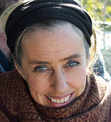Georgi Y. Johnson's Blog: I AM HERE - Opening the Windows of Life & Beauty, page 37
July 29, 2015
The Life-liberating Impact of Feeling the Feeling
Did you know that when you are suffering in your feelings, the same area of pain lights up in the brain as when you are physically hurt?
Our language is full of it. “He stabbed me in the back”; “She’s suffocating me”; “He gave me a kick up the ass.”
Yet, it is not widely known that there is clinical validation for the impact of feelings and emotions, and even clinical consequences.
At street level, someone who is stabbed in the physical heart gets immediate medical attention. But what kind of attention is needed for someone who is sentiently “stabbed in the heart”? And what happens if the feeling is not met, released or expressed?
If it’s not “all in the brain”, but “all reflected in the brain”, then how can awareness in the dimension of wordless feelings affect our living ability to be free?
Furthermore, how does the neural identification of emotional pain as physical pain affect the border between emotional health and physical health? How is the body mentally instructed to respond to unhealed emotional pain, and how is this going to effect physical wellbeing?
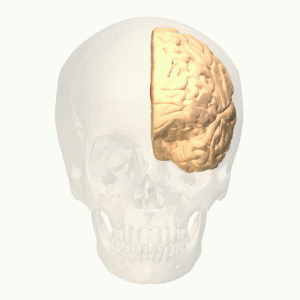
Anterior cingulate cortex
In 2011, neuroscientists revealed that when we suffer the pain of social rejection (at the heart of our aspirations to manifesting a life lived from the core of unity or nonduality), the same neural networks, within the anterior insula and the anterior cingulate cortex, are activated as when we experience a direct physical pain. (See Paper in PNAS: Social rejection shares somatosensory representations with physical pain)
These revelations are still hardly integrated into the therapeutic world, where the dimension of feeling remains vastly under-rated as an indulgent luxury today’s fast-paced life-style can’t afford.
Repeating a similar pattern, many spiritual seekers could have been encouraged to dissociate from the dimension of feeling, as showing a kind of unliberated imperfection that betrays a lack of freedom in states of pure consciousness or awareness. (If you’re concerned with the bad stuff: jealousy, fear, anger, grief, how can you claim to “get” nonduality?)
In a disturbing way, sometimes, nondual teachings – in their aspiration to reside exclusively in perspectives of pure consciousness, can find themselves affirming the social judgements that keep people locked in suffering – not physical suffering – but emotional suffering. Denial is denial, whether its from an allopathic doctor that hands out Prozac with a judgemental eye towards to treat panic attacks, or from the nondual community that looks askance with a subtle judgement that this person is clearly not “there” (where?)
Yet, if we once awakened into an experience of pure consciousness, should we then be free of emotional pain? Does it not hurt when we endure a loss, abuse, or cruelty? Does it not hurt when we witness the pain in others?
While all of us will immediately reach for a medical solution to a physical crisis, not all feel the same freedom with an emotional one, especially if there is judgement around so-called negative emotions. Yet in the area of sentience, this judgement becomes a fallacy. The same area of the brain will light up, (if we are truly in unity), on witnessing any pain – also in another person or animal – just as it does when we experience it within ourselves.
Pain is also here, now
So the anterior insula and the anterior cingulate cortex brain regions are where suffering is registered in the brain, and from where appropriate responses are issued. The brain, not differentiating between physical and emotional suffering, and without liberated sentience, will send instructions to the body as if the pain or threat of pain were physical. These can vary from sensory isolation of the affected area within a certain space, all the way to going into possum state (the last instinctive defence when an animal believes it is to be killed). The body, voice and movement will contort in a manner similar to a physical affliction.
But while physical pain can get processed through the physical, how are we able to process emotional pain, and what happens if we don’t have that freedom?
Consciousness V Feeling Awareness
To come to the gut of the healing matter, it can be helpful to make the differentiation between consciousness and awareness, as described in the book I AM HERE.
Consciousness, so much part of the wakened state and awakening, is intimately connected with the level of mind. For example, at the same time that we experience a physical pain, we can consciously witness ourselves experiencing it. This will happen as a reflex (for fight, flight or freeze reactions associated with survival). The onset of pain, as a rule, fires the nervous system, leading to an experience of heightened consciousness. We are immediately in the “Now”, and ready for action.
Yet when the survival threat has gone, the pain can still remain, throbbing on our burnt foot, or throbbing around our broken heart. While we can consciously tend to the foot, the broken heart is a bit awkward for consciousness. We can remain conscious of it, but that makes the pain worse.
We can use our consciousness to identify “where” the emotional pain is in the body, and relativize and sooth it by switching our consciousness to areas where there is no pain. We can move with our consciousness behind the emotional pain area, in front of it, around it’s contours and in and out of it. All of this is tremendously helpful, if we have the inner freedom to do it. It helps show the brain that the pain center is not absolute, not fixed, not an aggressor.
Yet often witnessing and relativizing is not getting to the depth of healing. The area was closed down energetically by the brain before any healing can be done. This is partly due to a deep mental programming to seek pleasure and avoid pain. It is also affirmed by conditioning in which there is a shame and embarrassment around negative emotion. For example, the handing out of valium to a young widow, to “get her through” the funeral, is the kind of norm that can actively sabotage a natural grief process. These kind of emotional freezes can become so critical that they create mental disorder, as an individual develops a habit of “skipping” the dimension of feeling or sentience, in such a way that it no longer seems to exist. Attempting to live from the mind alone and to retain conscious control of the experience of life, inevitably crashes the system sooner or later, as life rarely conforms to our subtle agendas of separation.
When we release consciousness and move with pure, wordless, feeling awareness, we re-open a dimension which is critical to the mental, physical and sentient well-being of the whole. This movement gives space and permission to the deeper layers of being that underlie, pre-exist and outlive all dualistic attempts at conscious control.
The Art of Feeling
While a lot of emphasis is put in modern spirituality on the existential “now”, the dimension of feeling is always, anyway in the “Now”. We feel our feelings now. We can’t feel them yesterday, without feeling them again now.
The moment we choose to feel a feeling, we have moved beyond thought and into direct experience. That is, we have moved out of the programing of the temporal, linear, left brain, which builds agenda through the composition of time frames and stories. Feeling what we feel does not take place yesterday, and will not take place tomorrow. It always happens in the now. Feeling is so much in the now, that even if the thoughts are in the future, the feeling will still be in the eternal now. Because of this, when we move from consciousness to awareness, or from mental awakening to sentient presence and begin to feel what “is”, old, unfelt feelings will emerge, even if decades have passed in the interim.
Contrary to popular belief, it is not possible to “think” away a feeling. We can check it rationally and we can relativize it. We can justify, excuse, build stories and rename it. But all of this thinking activity is dependent on the allowance of the feeling in the first place. We cannot know what the feeling is that we think we are “thinking away” (by changing our thought patterns) unless we first agree to feel it.
Feeling is happening (and the brain is responding to it) regardless of our thought processes. It can’t be fundamentally changed by different thoughts, any more than you can take away the pain in your foot by thinking about beaches in California. The pain is there anyway, all the mind can do is distract.
Yet feelings are not an empirical object (unlike the book that fell on your toe). How do you feel a cloud? How do you open perception to something so intangible, yet, (ghostlike), nevertheless haunting our comfort zone? A whole different faculty is required, the faculty of feeling awareness.
The agreement to feel our feelings – especially our non-physical ones – is a critical stage on the path of inner growth and healing. Feeling a feeling is not the same as witnessing it. When we feel a feeling, the feeling often begins to move. It can change vibration, change tone and change location. Feelings can have a rhythm, and when we agree to feel them they can at first intensify.
What can seem like a defined sensation in one space (such as a pain in the chest), can show its own energetic pathways, reappearing in a tightness in the throat, or sensations of discomfort around the sides of the physical head. Emotional pain is highly responsive to feeling awareness – and it readily tells its stories. All we need to do is respect it.
In the shifting of location of emotional pain, (and in our mind’s fear-based attempts to distract us from feeling what we feel), a spaciousness is opening up. The conceptual prison in which we hold our bodies is beginning to loosen up, as that awareness which is able to feel itself feeling begins to surround, infuse and allow all the areas of sentient pain. This awareness is receiving the sentient transmissions, reconnecting frozen or wounded energy fields to the whole, allowing transformation because it (your awareness) has no agenda to separate anything from itself.
When we agree to feel a feeling (for example, the pain of rejection), the feeling itself can become a curious experience. What is this phenomena? How does it have a temperature of hot and/or cold? How does it resist? How does it seem empirically to exist as separate from – what? How does it respond to love? What happens if I just wait all around it, patiently staying, to see if it wants to move or expand? Am I the feeling or the one that feels?
If we inquire further, the miracle of being able to experience pleasure or pain can lead us into greater freedom.
How is it to feel the quality of that which is able to feel? What is it in me that (at the front line) is able to feel love, pain, peace? What are these feelings and how do they differ? What is the feeling aspect that moves from one feeling to another? What feels atmosphere? How do I feel myself to be, at source?
For some, the agreement to feel their feelings at first brings them directly into the areas where they suffer. But later, they discover that there has also been a refusal to feel pleasure, love or peace. A whole repertoire of unconditional human experience begins to open up.
“Your joy is your sorrow unmasked”
Survival responses issued consciously or unconsciously which provide a beautiful mechanism to physical pain, are far less effective when it comes to emotional pain. At best, they repress symptoms, rather than allowing the natural feeling responses to go through their natural stages of transformation and restoration to unity within the energetic whole.
Certain sufferings, such as the pain of rejection, are inevitable within a human race divided into multiple bodies. If these stabs and blows are not allowed to be felt, they become dictators on the state of the heart, and by degrees close down our sentience and our natural and healthy ability to function in compassionate connection with the environment. This lock down gives tremendous stress to the whole system, on all layers.
For those schooled in nonduality, the differentiation between the dimensions of consciousness and awareness is well worth examination. Consciousness of consciousness of consciousness can be a truly liberating experience – one of inherent unity and light. Yet these awakenings are often followed by suffering. The expansion of consciousness means the control (censorship, denial, repression) previously asserted by the mind on feelings is released. Sentient suffering emerges – with many of those unhealed wounds trapped in the “now” beginning to flood through the opened doors of the mental prison. This is an opportunity for healing – but it requires sentient awareness.
Awareness of awareness of awareness, or the expansion of feeling inwardly into a feeling of feeling to a refinement of the sense of sentience has the potential to liberate an even more essential dimension of perception.
The way to unity is through allowance, never through rejection. With time, even the greatest dualistic pain of all, the pain of rejection, can become relative through its antidote of inner acceptance and in this, one of the greatest deterrents to joyful human manifestation can be realized as something more like a brush with a burning bush – pain that is unexpected, miraculous and an opportunity to reunite with the source of all we are.
July 27, 2015
The Still Small Voice is Speaking. Are we sane enough to listen?
About a decade ago, two psychiatrists and a team of student psychiatrists asked me if I hear voices in my head. “Why, don’t you?” I answered. They looked grandiosely disapproving and all simultaneously ticked something in their notepads. Oh dear.
OK, with three babies under the age of two, living in a strange country, alienated from a foreign culture, investigating non-conventional terrorism and what (in 1999) I feared was an international threat from Al Qaeda, I had become out of balance and was having panic attacks. Three babies, a conventionally ‘damaged’ childhood, the outgrown hippy lifestyle and the advent of the espresso machine didn’t help.
But how did hearing voices in the head become a criteria for the psychiatric condemnation they call diagnosis?
The voices in my head, not the voices (or weird medication) of the psychiatrists are the guides that were to show me the way back to balance.
Luckily for me, I listened to them and refused the drugs. Luckily for me, these voices midwifed the death process of a tired and worn ego structure through which I had paddled through life prior to child birth. They laid that old form to rest in a sea of light, and took what was left, from feet upwards, on a path of healing, renewal and understanding. They are the ones that oversaw the passage from one form of personhood to the next, along its bumpy path and through all its twists and turns.
In the depression that emerged after the period of anxiety, it was these voices, speaking from the gut upwards towards a troubled and despairing mind, that showed me a break in the clouds on a rainy day in the UK, telling how just as the weather changes, so do the moods, but showing the infinity of the sky behind all weather, always blue, always endless, always here.
Often called the Still Small Voice, these voices of guidance can appear to resonate from outside of ourselves. They can sound from above the head (not often objectively, but in a way that we could think we are imagining them), or they can sound from our gut, quietly, calmly and unconditionally.
These are the kind of voices that when you decide a perfect plan of action from the head, and consult the gut, could quietly answer “No”. They often don’t say much (and in my case seem to compact meaning into poetry), but they are directly to the point with an almost impersonal overview of time and space that is impossible for the local mind to grasp.
In a way, the Still Small Voice, often tells you, directly from the vast store of unconscious impressions, where the land lies, while the mind remains caught in its own story and agenda. As such, the Still Small Voice can seem irrational from the perspective of the “rational” mind, yet I have learned never to ignore it. Even if its transmission is just a feeling of discomfort, it’s enough to just wait.
Later on, I took to channelling: directly contacting these voices with automatic writing. I received advice and guidance that is still applicable today. Yet when I asked these guides who they were, they answered: “I am the undercurrent of your own mind, sweet face.” Psychologically quite a sane answer, no?
The many voices in the head
There are many voices in our way-to-busy minds. Some of them are programs, like repeating records, often acquired at a young age. These voices tend to be flat, hypnotic and repetitive.
One dirty, old record of mine is “Nobody likes you.” It’s a quite a classic. Unconditional to progress, elated states of being, success, achievement and periods of adoration, it goes on with its stubborn mantra.
Somewhere at the root of mental programming I have even seen how this idiotic mantra based on pure ego and duality, has been part of the fire behind the spiritual quest, the intellectual quest, the moral quest, and much of the activities of a life time. Without any relation to intelligence or spiritual development, it goes on with its banal message, even at times when being “liked” is utterly irrelevant. It can’t be theorized away. Its hold is almost generational.
It makes me wonder how many empires have been built, how many genocides conducted and how many wars fought and lost (and lost and lost), due to the repetition of similar unrealized root mantras of “normal” minds. One thing is now clear, having caught its tail, if I were to listen to its lunacy, I would be dancing a road to hell.
The tone of this voice is thin, bitter and slightly spiteful. It’s not my voice, and can be male or female. But it’s close to home, internalized at the root of mental form. Yet it’s subtle. It has the kind of undermining repetition that could have made me bow to the authority of the psychiatrists and take rocket bomb drugs when all I needed was rest, space and a little loving kindness. If it’s not realized by in the first place “hearing” it, its hold becomes even stronger, nestling deeply into the unconscious.
Other voices we hear in our heads can be the supposed replay of conversations. Yet in this rattle, do we listen to the subtle, creative way we alter the tone, and employ censorship in order to satisfy our own personal agenda of separation? These voices are the work of audio imagination, recomposing memory in subtle ways and with artful deletions in an attempt to regain inner peace through the a forcing of the feeling of being “OK”, right, or even marvellous.
These voices are also the kind of static in the mind that can be released through deeper attention or to listening more openly to the nature or atmosphere of the silence beyond them. If they are left to party, they will compose whole future scenarios as well as recomposing past ones. In all this, they are decomposing self esteem, vitality, and living connection to the truth of sensory perception. They distract and manipulate. They close down the senses, and as such, are hardly audible in quality or tone. Yet when heard, they do have a distinct atmosphere of distraction, denial and delusion.
Often, we can experience a variety of voices. There is the one that is adult within our minds, that judges, condemns and issues orders of censorship on the one that is childish. Many self judgements and repressions of authentic feeling arise from an attempt to identify exclusively with the adult one, and to keep the shameful one under wraps. Many choose to believe in the inner disciplinarian, that demands the kind of perfection from living form which is never going to happen.
Then, beneath all this cacophony, there is the Still Small Voice. But it won’t necessarily speak, especially not if we don’t believe in it enough to listen. We need to invite it with questions and be prepared to listen either to the answer, or to the quality of the silence.
The more we open our ears to this Still Small Voice, and begin to trust it, the more we open the inner communication line to the undercurrent of our own minds. In this dimension, time and space are not absolute, meaning it is possible from here, to receive a far deeper guidance about what is needed in terms of direction, (without it needing to make ‘rational’ sense).
Acting on this voice has saved my life more than once. Today, I try to speak from there as much as possible; simply because it articulates a deeper truth and wisdom; one that no structure of ego or individual “personhood” could ever oversee.
The key, as always, is in the receptivity, in the listening – listening not only to the words, but the tones. Listening not only for the meaning but for the harmony. Listening not only for the attitude but for the purity of unconditional care in the inner articulation. Let this be our compass.
There is (funnily enough) a stillness in the Still Small Voice. A stillness that oversees cause and effect through an interconnectedness of being in a way that our small minds could never anticipate. It is not for by chance that the animals in Thailand moved to higher ground hours before the people on the day of the Tsunami. They had access to information that people have long been programmed to ignore.
Modern psychiatry tends to swiftly categorize individuals according to parameters that are hardly understood by science, let alone by its representatives. In no time, they are coercing a range of medications to numb the mind – drugs that have a variety of long-term damaging effects and that at best only repress symptoms rather than treating causal layers of discomfort.
The very phenomena of thought, intuition, and the insanity of the hypnotic messages of judgement and condemnation given to us at birth are hardly understood, but perpetuated by many in the psychiatric profession. The judgement of the psychiatrist often resonates with the judgement of society towards mental “instability” and in turn affirms the lesser voices of mind – such as the one that reiterates again and the again that the individual has no worth, that there is separation, rejection and condemnation. In this, many beautiful minds are deprived of their greatest strength, the clarity that can emerge through the development of an open receptivity in which there is an ability to truly listen to the guidance of the Still Small Voice, through which individual and collective wisdom can emerge.
For more information on navigating the world of psychiatry and medication, follow the informative and inspirational blog: Beyond Meds.
July 26, 2015
Wormholes of the Soul – a nondual look at consciousness and time travel
Can you imagine that this physical body is a portal to a variety of other dimensions?
Is it possible to recognize that being “here” is far more awesome and mysterious than our habit-dulled mind would have us believe?
Where is here? Could “here” simultaneously be somewhere else?
When we look for the “here”, through physical sensation or mental concept, it tends to collapse into a strangeness. “Here” can be experienced as spooky action, not at a distance.
Would it be worthwhile to inquire into the possibility that the “here” could be far more than anything our man-made imagination could dream of?
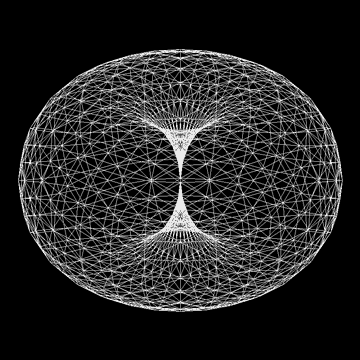 In meditation and the experience of being here, the only barrier to our passing through dimensions and experiencing heightened, deepened or liberated fields of perception is our own imagination.
In meditation and the experience of being here, the only barrier to our passing through dimensions and experiencing heightened, deepened or liberated fields of perception is our own imagination.
We tend to harbour a collective belief in a “Here”, which is real as-seen, good-to-go, material in the sense of limited and separated by its contours, and fundamentally bound by the mechanistic Newtonian laws of physics. In this, our minds are enslaved to our mental ideas about matter – ideas which form realities out of patterns of identification – ideas entirely debunked by modern physics.
Modern physics tells us of quantum entanglement, multiple dimensions, wormholes and the non-existence of matter. The individual particles of which we are composed are 99.999999999999 percent empty. The other 0.000000000001 percent is where our present “reality” is happening, including perception, creation, past, present and future. This makes this sliver of “reality” – this slim dimension of energetic experience we dwell in – precious stuff on an relatively eternal and infinite blank canvas .
But the canvas is not fundamentally blank, it’s inherently empty. There is a difference. The emptiness is sometimes described by physicists as the unified field – the deepest quantum layer of pure potentiality and infinite probability – the causal layer of all dimensions where time and space have no effect, but which is at cause in the emergence of the interwoven dimensions of time and space.
In the realm of experience, this unified field is not sublime, nor is it unreachable. Beyond even the word intimacy (that suggests two entities) it is at the core of experience, the continuum through all perception and the constant through all states, whether material, energetic, frozen, liquid or air. In the words of Zen, it is directly under the nose, so at one with any moment that there is no where to search, grasp or reach and nothing to attain. As Sri Nisargadatta Maharaj said, it is That, which is prior even to being, prior to consciousness, prior to identity.
Wormholes
A wormhole, or Einstein-Rosen Bridge, is a hypothetical topological feature that would fundamentally be a shortcut through spacetime. A wormhole is much like a tunnel with two ends, each in separate points in spacetime. We are used to think of wormholes as some remote scientific postulate “out there” in the universe. We rarely consider that we might ourselves by the container of multiple wormholes to other dimensions, and to other perspectives in space and time.
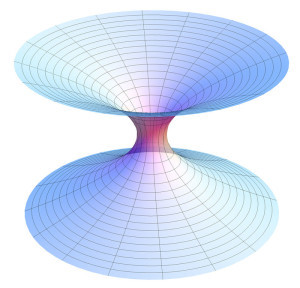
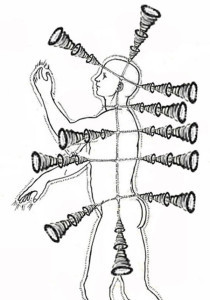 Whole books can be written on this subject, but for those students of alternative medicine familiar with the chakra system, do you notice the remarkable resemblance between a wormhole and a chakra?
Whole books can be written on this subject, but for those students of alternative medicine familiar with the chakra system, do you notice the remarkable resemblance between a wormhole and a chakra?
Whether or not the chakra system formally exists, it does seem that through the repeated movement of consciousness and awareness through these zones of the body, and the meditative exploration of them, there is the facilitation of experience of a different nature, more authentic (or more truthful in feeling) as the ‘regular’ experience through the physical senses. This could be a result of the generation of a field or the tunnelling through time and space through the “here-now” exploration of consciousness. It could also be that the organs have indeed gained a formal existence, in synchronization with the evolution of human form.
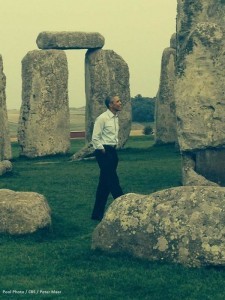
President Obama checks in at Stonehenge
What seems true, is that the intense focussing of consciousness on any cell, sensation, feeling, or apparent “object” will at a certain stage have a tunnelling effect, leading to the experience of other dimensions. The spiritual teacher Russell Williams (Not I, Not Other than I) talks of the wormhole created through repeated meetings in his small sitting room in Manchester. On visiting him in that apparently regular house, the sense of a familiar, powerful, soulful presence of another dimension is indeed striking.
In a similar way, wormholes to more essential dimensions of time and space seem to be created in holy sites such as cathedrals, mosques, syngogues and Neolithic monuments such as Stone Henge. When we visit these places it can be as if we (choicelessly) stand at a portal to another dimension which we can either resist (by closing down our perception), allow, or even choose to explore. These dimensions are not “other” than tis one, they become revealed as existentially present within it.
What passes through a wormhole?
Of course, in the sensation of travelling into our chakras and out the back door into Nirvana-like dimensions, or in visting Stonehenge and experiencing the effect of an infinite, timeless presence through and in us, literally vibrating through the stone, it is easy to leave behind a core question. What or who, is this aspect that travels and how?
This month, science validated a few more startling facts of the quantum universe. The discovery of a particle without mass, first postulated in 1929 as the Weyl fermion, introduces evidence of a particle that not only can move electrical charge even more rapidly than an electron, it also simultaneous exists as matter and anti-matter.
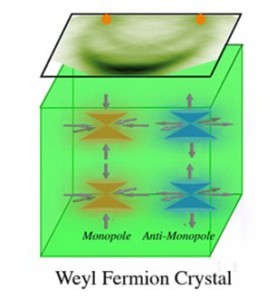 This mass-less particle defies one of last laws of form – gravity, finding direction in and of itself as if containing an inner compass beyond time and space.
This mass-less particle defies one of last laws of form – gravity, finding direction in and of itself as if containing an inner compass beyond time and space.
Another recent discovery is that the supposed (comforting) dividing line between our physical reality and the quantum reality, doesn’t actually exist. Bells inequality theorem has been proven false, bringing quantum directly uptown to the realm of our waking experience.
So the backdrop to our physical universe, (emptiness or That) can be described as an unlimited unified, intimately interwoven part of our consciousness or awareness, with fundamental particles that are easily able to defy gravity, time and space, connecting multiple dimensions through networks of wormholes.
Sometimes, that aspect of “who we are” that passes through the worm hole has been postulated as our consciousness, liberated from identification with form.
While it seems that the potential for consciousness does pass through a wormhole (or through a rift such as the divider between life and after-life), in the wormhole, in the moment of passing through the fabric of time and space, we would seem to be unconscious. There is a perceptive “blink” (like the moment of death, deep sleep or anaesthesia) after which consciousness is able to reawaken elsewhere. That is, something beyond (and at source) of consciousness is the vehicle through which consciousness can pass through time and space.
Again, THAT which precedes and underlies consciousness seems to be the deeper vehicle to freedom. Consciousness, even in it’s identification with itself as consciousness, needs to release identification in order to access the unified field. It needs to surrender itself, to leap into the dark, to release attachment to its own “seeing” or “sensing”.
The Paradox of the Unified Field.
 The argument is often made that awareness is the container of all experience and exists independently of all experience. Working backwards towards the source, it is then postulated that no experience can exist independently of awareness, therefore awareness is absolute. If we are not aware of it, it doesn’t exist.
The argument is often made that awareness is the container of all experience and exists independently of all experience. Working backwards towards the source, it is then postulated that no experience can exist independently of awareness, therefore awareness is absolute. If we are not aware of it, it doesn’t exist.
The use of rudimentary experience to define awareness is upside down, however. It is akin to the admission that even pure, liberated awareness is itself an experience. Soon we get to the notion that we need to pinch ourselves to know that we are “here”, or as the Italian philosopher Prof. Mauro Bergonzi put it at the recent Science and Nonduality (SAND) 2015 meeting in Italy, “believing that consciousness is absolute is like searching for the darkness with a flash light. Every where you point the light, you see only light, so you conclude that darkness doesn’t exist. But sooner or later the batteries will wear out, and the darkness will be anyway revealed.”
In meeting with Mauro Bergonzi, Sri Nisargadatta Maharaj asked the philosopher how he experiences himself. “As pure awareness.” Mauro answered. Nisargadatta took special care to show him he has to jump further back, to surrender more inward, even beneath the experience of pure, unidentified awareness.
The paradox is that experience is no longer there, because awareness is eclipsed.
 However, experience does set in with the imprint of the effects of the leap into the darkness at the source of ourselves. With the re-emergence of perception, an imprint of THAT which is at the source of perception is felt, often in a liberated perception, vitalized experience, or amplification of energetic patterns where we are still not free. This in a way, reveals how all experience is nothing other than the effects of something beyond experience, beyond perception, beyond the visible. One of the imprints of diving (as Kant said) over the boundaries of our own imagination is the breakdown of identification, with assumed “realities”, built on the five senses (and sometimes these “realities” bite down with a final pleas for absolute status).
However, experience does set in with the imprint of the effects of the leap into the darkness at the source of ourselves. With the re-emergence of perception, an imprint of THAT which is at the source of perception is felt, often in a liberated perception, vitalized experience, or amplification of energetic patterns where we are still not free. This in a way, reveals how all experience is nothing other than the effects of something beyond experience, beyond perception, beyond the visible. One of the imprints of diving (as Kant said) over the boundaries of our own imagination is the breakdown of identification, with assumed “realities”, built on the five senses (and sometimes these “realities” bite down with a final pleas for absolute status).
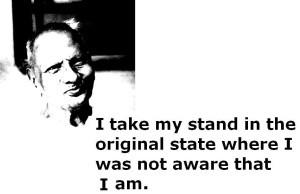 Not only this, but in the liberation of experience as a matter of effect and not the truth; experience itself transforms; the senses become free and non-identified; the body becomes realized in its miraculous fluidity; and the entity that passes through dimensions emerges as not that which is passing, but that which is perfectly still, as other dimensions pass through “it”. Wherever we travel, we are always “here”. We are not going anywhere, ever.
Not only this, but in the liberation of experience as a matter of effect and not the truth; experience itself transforms; the senses become free and non-identified; the body becomes realized in its miraculous fluidity; and the entity that passes through dimensions emerges as not that which is passing, but that which is perfectly still, as other dimensions pass through “it”. Wherever we travel, we are always “here”. We are not going anywhere, ever.
The surrender of consciousness, now and at the hour of our death, is the collapsed inwards to the core of who we are. It is the precise movement that allows transformation and the revelation of parallel dimensions. It is at source as the indestructible unified core, pre-creation, pre-space/time) which as perspective to stand inwardly increasingly calms the nervous system in the liberation of the transient human form in its manifestation according to evolutionary need.
Sri Nisargadatta predicted that his teachings would be validated by science. Month by month, this is happening. What remains is for we humans to validate the wonders of quantum science by allowing it into our direct experience.
July 23, 2015
Chashymie Program 2015-16
*Program is not final, subject to additions.
For more information and registration, contact bart@inner-growth.org
The Listening, Open Meditation, Zichron Yaakov, Israel (Bart & Georgi)
THAT. Open Meditation, Zichron Yaakov, Israel (Bart & Georgi)
Opening the Sacred Feminine, Haren, Netherlands (Bart & Georgi)
All about Freedom: Alaska (Bart)
Havelte 3 Day Retreat with Bart & Georgi: Allowing the Beloved
Healing Principle II, Haren, Netherlands (in Dutch) (Bart)
Healing Principle XIII, Haren, Netherlands (in Dutch) (Bart)
SAND Science & Nonduality Conference 2015 California (Bart & Georgi)
Allowing the Beloved, Seminar and Satsang, Israel (Bart & Georgi)
Healing Principle VIII, Haren, Netherlands (in Dutch) (Bart)
Harmony & Togetherness. Partner group, Haren, Netherlands (Bart & Georgi)
Meditation Intensive, Haren, Netherlands (in Dutch) (Bart)
17 – 21 December
Healing Principle IX, Israel (Bart & Georgi)
24 – 28 December
Healing Principle I, Israel (Bart & Georgi)
20 – 27 april 2016
i-Exist 2016, Walking with the Beloved, Glastonbury, UK (Bart & Georgi)
July 22, 2015
Awakening: a short guide for the perplexed.
Awakening. Spiritual awakening. Any awakening. Life changing awakening. It’s the new buzz word in modern spirituality. For some, it is synonymous with full-blown enlightenment. For others, it is tantamount to self-realization.
It makes total sense. Everything that we could ever be, think, do or feel can only have significance according to our ability to experience it. Without an experiencer, the experience is void. So how to open the power of the experiencer? Who is it that is able to experience the miracle of being here, now, and what is blocking it?
Many see their “awakening” as a singular event, which changed their life and significantly redefined their identity. Some claim to be perpetually awakened. Some seem to believe that once was enough, and they live in the light of the historic event from then on. It’s all good.
Whatever the claim and whatever the cost, no-one who has experience an awakening would ever want to forget it. It has an essential quality, a depth of truth, a fearlessness and a vitality that is more important to them than any detail of outer life.
This post is an attempt to give an entirely subjective guide to the word “awakening”, what happens, how to allow it, and how to make more and more internal space for an awakened life. After all, all that could ever be between us and an awakening to deeper truth is in our control.
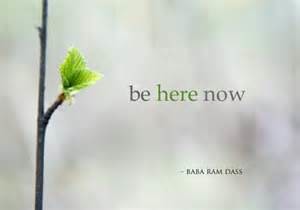 Of itself, the term awakening would seem to be in a dance of polarity with the word “sleep”. We awaken from something – a sleep, a state of illusion, a sense of not being quite alive, or not quite present. Yet this kind of awakening is not in polarity with sleep. Indeed, the Dalai Lama has said that “sleep is the best meditation”.
Of itself, the term awakening would seem to be in a dance of polarity with the word “sleep”. We awaken from something – a sleep, a state of illusion, a sense of not being quite alive, or not quite present. Yet this kind of awakening is not in polarity with sleep. Indeed, the Dalai Lama has said that “sleep is the best meditation”.
So what dream (waking or REM) do we awaken from in the mystical experience popularly described as awakening?
The experience of awakening has as many forms as there are experiencers, and often more. Yet as a guide, here are some pointers that tend to repeat.
Distance from thought patterns
An experience of space between mental thought processes and the one (you) that witnesses the thoughts. A realization that these thoughts are utterly irrelevant to the one that witnesses, both in content and agenda. As such, the consciousness liberated of identification with thought gains a momentary freedom to “reset” attitudes, thinking habits and approaches to life. Unlimited possibilities can emerge.
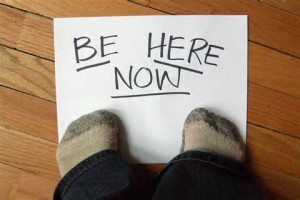 Distance from personal identity
Distance from personal identity
Fundamental forms of identity, such as gender, name, background, race, age or nationality can become alien. Seen from an awakened perspective, these forms – once definitive of self – are no longer definitive. They fall away as vehicles in constant transformation that are powerless and irrelevant without the driver.
Distance from the physical body
A fundamental belief that the self is contained, restrained by, and will die with the physical body collapses. The body becomes a non-problematic vessel that is not even a container of the awakened self. This can feel like we are visiting our selves from afar, arriving with a kind of wonder to experience this entity’s temporal placement in a physical human form.
The collapse of separation
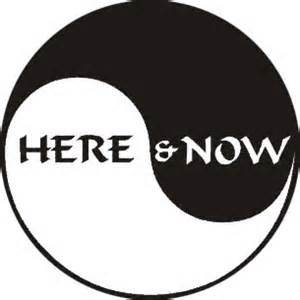 Just as body, name, thoughts and identity no longer define the one that has taken an awakened glimpse at the miracle of being here, so do the borders between one individual and another, or between the separate self and its environment collapse. Where does the awakened self begin and where does it end? Liberated from limitation, the experience of oneness with all that arises within the field of perception can be a strong part of awakening.
Just as body, name, thoughts and identity no longer define the one that has taken an awakened glimpse at the miracle of being here, so do the borders between one individual and another, or between the separate self and its environment collapse. Where does the awakened self begin and where does it end? Liberated from limitation, the experience of oneness with all that arises within the field of perception can be a strong part of awakening.
A Paradox of Awakening
How to awaken? Paradoxically, precisely those areas, listed above, from which we experience the strongest liberation, are the bridges to liberation. We don’t awaken by denying the body, our identity or our thought patterns. These are precisely the magical ingredients that set us free. Why? Because when we allow, truly allow, our consciousness or attention to turn to these forms, then they become realized as non-definitive. Every bridge is good, so take one that works for you and practise it.
Identity
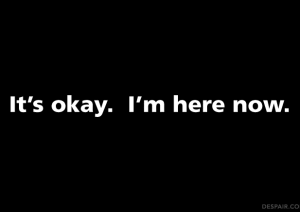 Your birth name. This name, that signifies all you have been, according to you, according to others, and all you will ever be. The name you heard as a new born baby, before you had learned to believe in thoughts. Repeat this name to yourself. Is it familiar to you? How do you feel about the name? What meaning does this name have to you? What meaning does this name have to your mother or other close family member? Is this name who you are? So who are you?
Your birth name. This name, that signifies all you have been, according to you, according to others, and all you will ever be. The name you heard as a new born baby, before you had learned to believe in thoughts. Repeat this name to yourself. Is it familiar to you? How do you feel about the name? What meaning does this name have to you? What meaning does this name have to your mother or other close family member? Is this name who you are? So who are you?
Thought patterns
Yes, there are times when we all prattle away to ourselves inside our heads. We think we are doing something constructive, but actually we are hiding from thought itself. Thought is in the most part composed of silence, and as such, most verbal thinking is an act of repression or denial of the faculty of mind. Often it is an argument between various internal selves – such as one that is angry at the other for being weak or vulnerable. Which one is the real you? Which one do you stand for? If any? Who is watching the children play as they squabble?
 Often, when we attend to the silence, our thoughts will at first become quiet, like children when the teacher has entered the classroom. But after a while they will sneakily start up again. The art is to stay as the curious witness. What is the miracle of a voice inside the head? What is the miracle of it’s content? Where are these thoughts arising from? Do we have the power to slow them down, for example, to look at an object without naming it, and watch how the name emerges out of the silence of the mind? How strong is the connection between the word and the “thing” (if any)? Where is the thought emerging from, and who is witnessing?
Often, when we attend to the silence, our thoughts will at first become quiet, like children when the teacher has entered the classroom. But after a while they will sneakily start up again. The art is to stay as the curious witness. What is the miracle of a voice inside the head? What is the miracle of it’s content? Where are these thoughts arising from? Do we have the power to slow them down, for example, to look at an object without naming it, and watch how the name emerges out of the silence of the mind? How strong is the connection between the word and the “thing” (if any)? Where is the thought emerging from, and who is witnessing?
Thought patterns are also lost in time. Not real, linear clock time, but in a kind of chaotic gap where the true mystery of time is denied. Thoughts run from the past and they deny the future, while pretending to be actively preventing the past repeating by predicting the future, or changing the past, or controlling the future.
Yet who is this one at the heart of time? Who is the one that closed his or her eyes in bed as a child and wondered how she or he would ever fall asleep? Who is the one who is here now, beyond thought? Who is the one who will still be here, five years from now, regardless of all happenings or events? Who is the one who will gaze, sooner or later, into the pit of time at the moment of his or her death?
This one is the one that seeks to awaken in mental and physical form. This is the one that needs to awaken in time, the time of creation.
The body
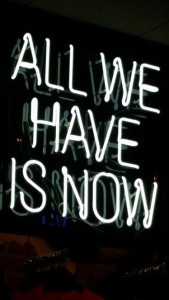 It is a common spiritual message that you are not your body. This is fine, but limited. Denying the body is a reaffirmation of illusion, perpetuating more illusion. We don’t even know what the body is, or this mind-blowing miracle of transforming, living matter to which we are attached, and we already seek to deny it. Also scientists don’t know what it is, not the living miracle of an individual cell, and not even the wonder of an inorganic particle.
It is a common spiritual message that you are not your body. This is fine, but limited. Denying the body is a reaffirmation of illusion, perpetuating more illusion. We don’t even know what the body is, or this mind-blowing miracle of transforming, living matter to which we are attached, and we already seek to deny it. Also scientists don’t know what it is, not the living miracle of an individual cell, and not even the wonder of an inorganic particle.
The allowance of the miracle of our being here, physically, is a major bridge to awakening. The only way we can access this strange, phenomena of being physically alive with legs on the ground and dangling arms, breathing oxygen in synergy with the environment is through allowing the changing, temporal, slightly freaky nature of physical sensation.
The shock of gravity, or the air on the face, of the blood in the veins, of physical areas of pleasure and pain, all of this is awakening. We are taught to believe it is nothing, but the way of experiencing the body is endless. And when we are done with the substantial part, it can get even more habit-blowing when we begin to inhabit the emptiness in our bones, the emptiness between sensations, the emptiness in the head, the emptiness of the universe.
We are not the idea we have of a body. But when we truly allow the experience of a body, then the very border between body and spirit dissolves. This can create a panic in the nervous system, often confused with awakening itself, which will relax over time as awakenings normalize through deepening degrees of physical incarnation which the nerve system on longer identifies as a threat but as a harbinger of bliss.
Separation
Yes, we are hardwired to separate ourselves from inside-out. Using various layers of form and identity to give the appearance of independent existence. Yet when we deeply contemplate the “other”, its otherness will often collapse into unity. The idea of separation can only survive through unconscious programming, it can never survive direct, honest inquiry. Most of the “otherness” we experience is an effect of imagination – the tricky part of mind that bypasses lingual thought processes and throws up pictures worth a thousand words to cement an illusion of separation. Don’t believe in it. Also, the imagination can be realized as a miraculous faculty that says nothing at all about truth or reality.
We are not separate from anything we perceive, nor from perception itself. Try this short exercise to open up a little inquiry. Take an object on the other side of the room. Bring your attention to your (as if) separate self, and then bring your consciousness fully to the object. Switch between your self and the object for some time. After a while, relax your vision to include all the objects in the room. Where are you now?
The Advantages of Awakening
 From the perspective of an awakening, it seems utterly insane to go back into the world of illusion. Such is the liberation, joy, potential, freedom and sense of endless energy, which awakening causes. And yet we do sink back into habit and programming, for the purpose of healing. We even go back to seeking the distractions of entanglement and attachment in order to actively avoid awakening, as if awakening hurts. And sometimes it does. Also our pain, shock and trauma are in the here and now. Also the memories we have repressed perhaps for decades. We have good survival reasons to choose for illusion as a short term deterrent of unwanted pain.
From the perspective of an awakening, it seems utterly insane to go back into the world of illusion. Such is the liberation, joy, potential, freedom and sense of endless energy, which awakening causes. And yet we do sink back into habit and programming, for the purpose of healing. We even go back to seeking the distractions of entanglement and attachment in order to actively avoid awakening, as if awakening hurts. And sometimes it does. Also our pain, shock and trauma are in the here and now. Also the memories we have repressed perhaps for decades. We have good survival reasons to choose for illusion as a short term deterrent of unwanted pain.
This is a strange phenomena, which should be treated with internal kindness. We are also not just carrying our own identities, we are carrying the identities of the whole, generations forward and backward, and the atmospheres of one humanity.
Yet each time we awaken again, we are of service to the whole and to ourselves. Each time we follow the path out of the illusion of false identification, we open a thread of light directly into the human dimension, and we become by degrees more free.
The pain we fear in awakening is old pain, and by degrees, through awakening, this pain will heal, in a way that the memory is kept and the experience becomes a liberated source of wisdom to help others. We don’t need to wait until suffering knocks at our door again to open the door of awakening and restoration of our natural human freedom.
By degrees, we find we can awaken as a choice and as a practise. This means increasing freedom from the suffering of ego, rejection, shame, and above all fear. This brings a vast increase in joy, pleasure and freedom of mind. We become less reactive and less cruel.
After a while, we will look back several years and be amazed at how life began, in the moment we agreed to let it, by allowing the miracle of being here, and being so much more than that.
Previous experiences of awakening can help us move back out of form. But they don’t count anymore except as sign posts left on an old path. Awakening can’t be held or claimed. They can’t be controlled or worn as an acquisition of character. Awakening can only be facilitated as a constant choice, each time unique, each time momentous, each time bringing something new of the greater you as a precious gift to the planet.
July 13, 2015
The Listener: Sound, Vibration, Nonduality & Consciousness
In the language of modern spirituality we hear a lot about the witness or the observer as a perspective through which to disentanglement from mind and feeling in allow experiences of pure consciousness or awareness. In this, the focus tends to be on the visual capacity of mind: the “seeing” of waking consciousness.
Yet there is a whole dimension waiting for discovery, and its ways cannot be left blocked. This is the dimension of the listener, of awareness of vibration, of attunement and of harmony.
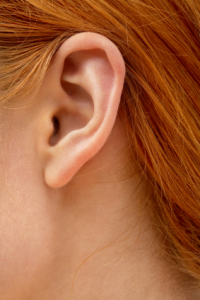 We all know the expression “seeing is believing”; rarely do we hear someone say “I heard it and so I believe it.” A reason for the visual-centric focus is that the seeing faculty is more closely connected with conscious control. We can cover our eyes, but we will hear the truth anyway.
We all know the expression “seeing is believing”; rarely do we hear someone say “I heard it and so I believe it.” A reason for the visual-centric focus is that the seeing faculty is more closely connected with conscious control. We can cover our eyes, but we will hear the truth anyway.
We can move to a soundproof room, but the silence of our own minds cannot be guaranteed. Even in the pure, vulnerable allowance of silence, there a multitude of life and vibration. Silence is not static or stable. It has atmospheres.
Consider, for example, the difference between a loving silence and an angry silence, or the silence inside yourself and the silence in the environment. Silence is not an end-point but the starting point of a journey of coming to life.
The realm of listening, hearing or vibration reaches beneath the alluring surface of conscious seeing and deep into the unconscious. In the language of I AM HERE, it shifts us from the dimension of consciousness, or spirit/mind, to the dimension of awareness, or soul/sentience/heart. It moves us involuntarily out of the realm of the “I” the volatile dimension of consciousness, individuality and identification, and into the “AM”, the dimension of sentience, vibration and Being.
This dimension is all about allowance, and as such it is not surprising that the fear of surrender could lead to a modern focus on visual perception (even in a spiritual context). Yet this shift into the causal layer of vibration is the exact deepening needed to allow peace of mind; freedom from entangled beliefs and thought systems; and liberation from restricting, illusory patterns of identification.
We have these amazing appendages called ears positioned on the side of our heads, perfectly placed to equalize left brain – right brain input. These delicate organs translating vibration to the brain give us the perception of sound, or hearing, from which we extract subjective meaning. A good part of our listening is selective, with the brain choosing to attend to a certain voice and to cut out distant sounds, background noises, or even the subtle texture of the sound that is choicelessly invading the brain. The search for meaning clouds the perception already in the attunement, through conscious attempts to differentiate and negotiate meaning that in a way sit on top of the actual resonance of the sound.
Imagine someone is telling you a story. In no time, you are selecting, choosing what to identify with, planning what to say next, reconstructing meaning, or trying to understand the language. How would it be if you just relaxed into the listening to the space between the words, or the silence beneath, surrendering to the whole intonation? How much more would be heard? How much deeper would be the meaning and insight that emerges?
The Listening
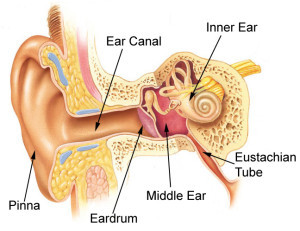 Vibration moves beyond conscious control, meaning that the reflexive movement to choose or select the contents of perception is undermined. Through allowing the vibrations which are around and through us anyway, we surrender into the and-and-and dimension, releasing the binary mind of “either-or”.
Vibration moves beyond conscious control, meaning that the reflexive movement to choose or select the contents of perception is undermined. Through allowing the vibrations which are around and through us anyway, we surrender into the and-and-and dimension, releasing the binary mind of “either-or”.
Whether or not we choose for it, our bodies reverberate as one with to sounds and vibrations – perceivable and imperceivable – in our environment. We don’t get to be separate. Rejection is pure illusion.
With seeing, when we face another person. We see them and they see us. There is already a direct polarization between subject and object. Only if there is the mutual courage to relax into the one that sees from beyond sets of eyes, can a shared consciousness be celebrated.
Yet when we are together, we all hear sounds simultaneously and in synchroncity, whether we want to or not. If a piece of music is playing, we all share the listening, without any subject-object split. Even if we block our ears, the very cells of our bodies are resonating with the vibrations of the melody. We don’t have to all individually like it, but we share the vibrations in the moment of their happening.
In the dimension of vibration, there is no split between subject and object, except the one created as an after effect of the mind. Even if one person speaks, their voice is heard by them, together with a whole audience. They are not only the speaker, they are also simultaneously one with the listeners. Already with the very utterance, the sound is released and can be heard (also by them) as a neutral vibration. It moves through them, it is not “theirs” no matter how they might try to possess the story as formed by their own language/thoughts.
In its purity, the sound is an occurrence, heard by them, just as every sound is heard by…. who or what?
And here, the inquiry becomes still more interesting. Who is the listener? Is their any space in the universe where this listener is not?
Who is the listener?
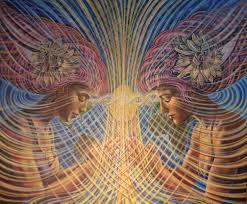 When we have the courage to surrender to the listening, we can begin to inquire where this sound is reverberating within us. If we let the filters of our minds and thoughts stand back, who is hearing? Who hears the sounds in the far distance, the sound in the room we can see, and the sounds of our own inner voice with equanimity? Where is the one that hears, independently of the physical ears?
When we have the courage to surrender to the listening, we can begin to inquire where this sound is reverberating within us. If we let the filters of our minds and thoughts stand back, who is hearing? Who hears the sounds in the far distance, the sound in the room we can see, and the sounds of our own inner voice with equanimity? Where is the one that hears, independently of the physical ears?
Allowing the listener can lead to universal spaces of freedom. Everything can be heard. Colors can be heard. Pain, grief, guilt can be heard in its strange song. Smells can be melodious. Love itself can have a rhythm and unlimited intonations. Peace too. All of this vibrational, atmospheric weather is moving through this one, the inner infinity of the listener, in the infinite space of subtle, sentient pure awareness.
Can you listen to yourself listening? Can you actively choose to listen to the silence, and to listen for a space within the silence which is even more empty than silence itself? Can you be that one, in which all vibration occurs?
We would love to hear news of your findings in the comment box here or on the social media.
Resonance and the tendency towards harmony displayed by the synchronization of a whole load of metronomes. How do our minds interfere with our own physiological natural tendency towards harmony with the natural environment?
July 11, 2015
7 ways to liberate love through liberating the mind
It is important to honour the depth of unconscious fear around the word “Love”, still more when we talk and aspire to a love which is unconditional. No fear can survive in the here and now – fear is always generated by thoughts based on what was, and what could be. In the ‘Now’, fear is just the momentary imprint of an excitement in the nervous system. So it is worthwhile to check into this fear – around unconditional love – through the present moment, and to mentally release some of the beliefs on which this fear is based.
7 beliefs about love through which we imprison ourselves.
1. Love exists separately from the rest of creation.
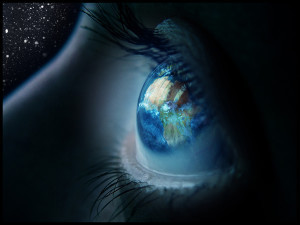
Is consciousness absolute or is it an effect of love?
Where love is believed as a way to escape, transcend or evade the world of body, mind and gut, a misconception is underway which will open a process of suffering.
While love is beneficial, expansive, healing and opening, the very idea that it is somehow “other” than the kitchen sink, the grit in our finger nails, the neighbors mother, or the big cruel world is a misconception.
Embedded in this misconception is the subtle mental agenda to divide the self from the feared “outside”. This unconscious investment in a belief in the feared “outside” causes an energetic contraction or freezing which feeds back into the form as a “reality”.
In no time, “Love” is something that needs to be defended, protected against perceived enemies. In no time, love isn’t that loving anymore.
2. Love is something that we do.
The question of choice in love is an open one. Is there a subtle layer of choice in which we agree to let go of our patterns, identifications, fears and refusals to endure the vulnerability of pain?
Yet even here, we don’t “do” love. What is actually happening is that we allow this imperceivable mystery called love.
“We” – all the ideas and beliefs of who and what we think we are and where we think we are going – gets out the way. These networks of identification and agenda surrender to something wondrous beyond themselves.
It is not a doing, but a “letting”. Do we “do” the allowance? Perhaps. But the allowance is unconditional – if what emerges from the surrender is something that feels like love, then it’s good. But it’s not in our control. Also pain and grief is made of love.
We don’t get to decide the form.
3. Love can be owned and controlled.
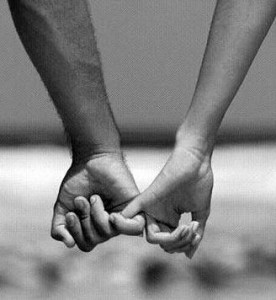
“Love is a law that operates in such a way, that you and I cannot dictate to it, we can only blend with it.” Bob Moore
Even if in our language we are gunning for universal love, in our minds and in the configurations of our energy, we are still formed to some degree in the pattern that there is an inherent difference between “my” love and “your” love.
Seeing our individual personhood as the origin of love, we inevitably feel it as limited in supply, and that it is given at a certain cost. We believe that this love can be “won” and “lost. We get possessed by the idea of it.
We can feel outraged if our (personal) love is not seen, respected or recognized by the “other” person. We expect a bit of their personal love in return. Otherwise it is abuse. The love is contracting into hatred, sacrifice, and resentment.
In this, there is a confusion between the tender, vulnerability of the form in opening to love, and the love itself which can never be controlled, directed, possessed or identified.
We tend to fall short of the mystery and spiral into a quest for particular feelings that can look like a spiritual copy of any drug addiction.
4. Love depends on certain conditions.
Funnily enough – unconditional love is… unconditional.
It doesn’t depend on any conditions of form, mind, heart or body. It does not require us to meet a certain standard of perfection in order to be everywhere and in everything. It is equally present in the heart of the greatest sage as it is in the hairs clogging the kitchen sink. It doesn’t differentiate. It can’t, because it does not depend on time and space.
This means that we can experience the same effects of love today as we did for someone 40 years ago. It is not caught in time. Nor is it caught in space. In a large part, it is unconscious, needing nothing of reflection.
If the object of our love dies, does the love vanish with it?
5. Love can be more or less.

The idea that love originates in the individual body and is determined by it’s contours is a major limitation. The body is nothing other than an unconditional manifestation of love. Always.
We can measure the effects of love. But we can never measure love itself.
This is because love is not limited by our mental, emotional and psychological forms. We can decide that “somebody” is bringing a tremendous love, and “somebody else” is not bringing any love at all. But this verdict is based on the projections of mind arising out of a fundamental misconception. Love is not exclusively in, or even exclusively moving through the objects of our physical senses. It is not confined or originating in the separate physical body.
The objects of our physical senses, including our own bodies, are in fact moving through love. The closest analogy would be to take love as the air on the planet. The space between stuff. The space within stuff. The space behind stuff and the space after stuff.
All this stuff is here by grace of this loving space, and is inseparable from it. All transformation and healing is allowed by virtue of this loving space. This infinite space does not require any stuff to exist. But all the stuff is dependent on it.
Can infinity be more or less?
6. Love is the feeling of love.
When someone punches you on the nose, your nose burns with pain. The pain is an effect of the punch. In the same way, when the living space which is love appears through the breaking open of our hearts, there is a feeling of the heart breaking open. Perhaps a feeling of the mind losing its normal functioning, perhaps even a feeling of the body getting a life of its own (phew!). These are the imprints of love. They are not love in its purity.
These feelings are the effects of love. They are not the love itself. They are the sentient impressions of love on the forms which we are carrying, which are breaking down, healing, transforming and evolving.
The confusion of the effect with the cause (and labelling this panorama of changing effects “love”) leads again into suffering.
In no time, we are choosing to identify the “positive” or pleasant effects us love, and the other (painful) effects as not-love. How many of us would affirm the power of love in a process of grief or loss? How many would have the courage to allow the love in the agony of rejection or abandonment? But how could these feelings be anything other than the effects of love? The effects we don’t ‘want’?
And love becomes conditional again, on the pleasure and not the pain. And in running from suffering, we suffer more. Still worse, we become cruel to ourselves and others.

From antiquity to the modern day – destruction based on misconceptions of love.
7. Love is the opposite of hate.
From this belief all the way to the crusades and the Spanish Inquisition.
Love exists beyond duality. It is not separate from any molecule, particle, or “moment” of memory. Love never excludes, it never divides.
It is so much at source of who we are that it is when it is at its most powerful and free that we are often least aware of it – such as in infancy or in those time pure action through truth – too fast for sentient reflection.
Hatred is also composed of love. Without the omnipotency of love, hatred would have no context. In the world of energetic form, the opposite of hatred is not love, but sacrifice. We experience hatred towards ourselves and others when something needs to be destroyed or be allowed to die. Something needs to be sacrifice. Unevolved enough to e able to sacrifice an aspect of our inner world – an illusory sentient belief structure of identification and attachment, we seek to sacrifice it in the apparent “other” – as if this sacrifice could bring relief to the demon we face within.
These crucifixion scenarios, or the hunt for the infidel (or the witch-hunt), these displays of hatred are the actions of despair – the multi-layered attempts to realize the deeper truth of who we are through destruction – the direct destruction or burning down of false identity.
The love is here, before, during, within and after every rampage of hatred. It can not be erased, it can only be hidden in the smoke of human delusion.
7 beliefs about love through which we suffer. A loving nonduality.
It is important to honour the depth of unconscious fear around the word “Love”, still more when we talk and aspire to a love which is unconditional. No fear can survive in the here and now – fear is always generated by thoughts based on what was, and what could be. In the ‘Now’, fear is just the momentary imprint of an excitement in the nervous system. So it is worthwhile to check into this fear – around unconditional love – through the present moment, and to mentally release some of the beliefs on which this fear is based.
7 beliefs about love through which we imprison ourselves.
1. Love exists separately from the rest of creation.

Is consciousness absolute or is it an effect of love?
Where love is believed as a way to escape, transcend or liberate ourselves from the world of form, a misconception is underway which will open a process of suffering.
While love is beneficial, expansive, healing and opening, the very idea that it is somehow “other” than the kitchen sink, the grit in our finger nails, the neighbors mother, or the big cruel world is a misconception.
Embedded in this misconception is the subtle mental agenda to divide the self from the feared “outside”. This unconscious investment in a belief in the feared “outside” causes an energetic contraction or freezing which feeds back into the form as a “reality”.
In no time, “Love” is something that needs to be defended, protected against perceived enemies. In no time, love isn’t that loving anymore.
2. Love is something that we do.
The question of choice in love is an open one. Is there a subtle layer of choice in which we agree to let go of our patterns, identifications, fears and refusals to endure the vulnerability of pain?
Yet even here, we don’t “do” love. What is actually happening is that we allow this imperceivable mystery called love.
“We” – all the ideas and beliefs of who and what we think we are and where we think we are going – gets out the way. These networks of identification and agenda surrender to something wondrous beyond themselves.
It is not a doing, but a “letting”. Do we “do” the allowance? Perhaps. But the allowance is unconditional – if what emerges from the surrender is something that feels like love, then it’s good. But it’s not in our control. Also pain and grief is made of love.
We don’t get to decide the form.
3. Love can be owned and controlled.

“Love is a law that operates in such a way, that you and I cannot dictate to it, we can only blend with it.” Bob Moore
Even if in our language we are gunning for universal love, in our minds and in the configurations of our energy, we are still formed to some degree in the pattern that there is an inherent difference between “my” love and “your” love.
Seeing our individual personhood as the origin of love, we inevitably feel it as limited in supply, and that it is given at a certain cost. We believe that this love can be “won” and “lost. We get possessed by the idea of it.
We can feel outraged if our (personal) love is not seen, respected or recognized by the “other” person. We expect a bit of their personal love in return. Otherwise it is abuse. The love is contracting into hatred, sacrifice, and resentment.
In this, there is a confusion between the tender, vulnerability of the form in opening to love, and the love itself which can never be controlled, directed, possessed or identified.
We tend to fall short of the mystery and spiral into a quest for particular feelings that can look like a spiritual copy of any drug addiction.
4. Love depends on certain conditions.
Funnily enough – unconditional love is… unconditional.
It doesn’t depend on any conditions of form, mind, heart or body. It does not require us to meet a certain standard of perfection in order to be everywhere and in everything. It is equally present in the heart of the greatest sage as it is in the hairs clogging the kitchen sink. It doesn’t differentiate. It can’t, because it does not depend on time and space.
This means that we can experience the same effects of love today as we did for someone 40 years ago. It is not caught in time. Nor is it caught in space. In a large part, it is unconscious, needing nothing of reflection.
If the object of our love dies, does the love vanish with it?
5. Love can be more or less.

The idea that love originates in the individual body and is determined by it’s contours is a major limitation. The body is nothing other than an unconditional manifestation of love. Always.
We can measure the effects of love. But we can never measure love itself.
This is because love is not limited by our mental, emotional and psychological forms. We can decide that “somebody” is bringing a tremendous love, and “somebody else” is not bringing any love at all. But this verdict is based on the projections of mind arising out of a fundamental misconception. Love is not exclusively in, or even exclusively moving through the objects of our physical senses. It is not confined or originating in the separate physical body.
The objects of our physical senses, including our own bodies, are in fact moving through love. The closest analogy would be to take love as the air on the planet. The space between stuff. The space within stuff. The space behind stuff and the space after stuff.
All this stuff is here by grace of this loving space, and is inseparable from it. All transformation and healing is allowed by virtue of this loving space. This infinite space does not require any stuff to exist. But all the stuff is dependent on it.
Can infinity be more or less?
6. Love is the feeling of love.
When someone punches you on the nose, your nose burns with pain. The pain is an effect of the punch. In the same way, when the living space which is love appears through the breaking open of our hearts, there is a feeling of the heart breaking open. Perhaps a feeling of the mind losing its normal functioning, perhaps even a feeling of the body getting a life of its own (phew!). These are the imprints of love. They are not love in its purity.
These feelings are the effects of love. They are not the love itself. They are the sentient impressions of love on the forms which we are carrying, which are breaking down, healing, transforming and evolving.
The confusion of the effect with the cause (and labelling this panorama of changing effects “love”) leads again into suffering.
In no time, we are choosing to identify the “positive” or pleasant effects us love, and the other (painful) effects as not-love. How many of us would affirm the power of love in a process of grief or loss? How many would have the courage to allow the love in the agony of rejection or abandonment? But how could these feelings be anything other than the effects of love? The effects we don’t ‘want’?
And love becomes conditional again, on the pleasure and not the pain. And in running from suffering, we suffer more. Still worse, we become cruel to ourselves and others.

From antiquity to the modern day – destruction based on misconceptions of love.
7. Love is the opposite of hate.
From this belief all the way to the crusades and the Spanish Inquisition.
Love exists beyond duality. It is not separate from any molecule, particle, or “moment” of memory. Love never excludes, it never divides.
It is so much at source of who we are that it is when it is at its most powerful and free that we are often least aware of it – such as in infancy or in those time pure action through truth – too fast for sentient reflection.
Hatred is also composed of love. Without the omnipotency of love, hatred would have no context. In the world of energetic form, the opposite of hatred is not love, but sacrifice. We experience hatred towards ourselves and others when something needs to be destroyed or be allowed to die. Something needs to be sacrifice. Unevolved enough to e able to sacrifice an aspect of our inner world – an illusory sentient belief structure of identification and attachment, we seek to sacrifice it in the apparent “other” – as if this sacrifice could bring relief to the demon we face within.
These crucifixion scenarios, or the hunt for the infidel (or the witch-hunt), these displays of hatred are the actions of despair – the multi-layered attempts to realize the deeper truth of who we are through destruction – the direct destruction or burning down of false identity.
The love is here, before, during, within and after every rampage of hatred. It can not be erased, it can only be hidden in the smoke of human delusion.
July 9, 2015
When we allow love, peace will come and find us.
“I am part and parcel of the whole and cannot find God apart from the rest of humanity.”
– Mahatma Gandhi
The search for love is fundamental part of human nature. Leading us from peeks to valleys outside of ourselves, at a certain stage we turn – or are turned – inside with an inquiry into the nature of love itself. What is it? Where is it arising from? Where does it lead? How could it be lost or won? For many, a paradigm shift occurs when love itself moves them beyond personal identification, and even beyond identification of the “object” which is sought for love. In this liberation, an understanding emerges of the omnipresence of love – regardless of time, space and form – and a process emerges to blend with it and allow it into the mind, gut, heart and body.
 Blissful and unidentified, unconditional and unlimited, this love unconfined by identification can lead to periods of bliss. Yet such episodes (recognizable at the end of a healing workshop, or after a sudden unconditional deepening of heart), have a whiplash. This has been written about in books such as After the Ecstasy the Laundry by Jack Kornfield.
Blissful and unidentified, unconditional and unlimited, this love unconfined by identification can lead to periods of bliss. Yet such episodes (recognizable at the end of a healing workshop, or after a sudden unconditional deepening of heart), have a whiplash. This has been written about in books such as After the Ecstasy the Laundry by Jack Kornfield.
“Enlightenment is only the beginning, is only a step of the journey. You can’t cling to that as a new identity or you’re in immediate trouble. You have to get back down into the messy business of life, to engage with life for years afterward. Only then can you integrate what you have learned. Only then can you learn perfect trust,” writes Kornfeld, quoting a Zen Master.
Such is the nature of unconditional love, that as the spiritual teacher Bob Moore said: “Love is a law that operates in such a way, that you and I cannot dictate to it, we can only blend with it.”
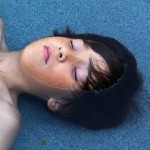 As such, love, the great harbinger of unity, will lead our attention directly to the exceptional – to those areas where love is not free. This can be areas of energetic contraction, reflected in a narrowing of perception and a constriction of mental thought processes. It can be towards areas of trauma or grief. It will – more often than not be to those parts of our physical, psychological and sentient form where we are wounded.
As such, love, the great harbinger of unity, will lead our attention directly to the exceptional – to those areas where love is not free. This can be areas of energetic contraction, reflected in a narrowing of perception and a constriction of mental thought processes. It can be towards areas of trauma or grief. It will – more often than not be to those parts of our physical, psychological and sentient form where we are wounded.
In every cycle of healing, small and seemingly minor, or at the core of karma connected with the mother wound and the shock of our incarnation, love will trigger a reaction. And while allowing love to do it’s work in and of itself can bring a magic of healing, there is a deeper power, arising directly out of the source, with which we might have even deeper conflicts. This power is recognizable as the energy of peace.
The Core of our Psychology
 Regardless of our beliefs in the individuality of life before birth or after death, there are three factors which are indisputably found at the initiating core of perception of being here, alive.
Regardless of our beliefs in the individuality of life before birth or after death, there are three factors which are indisputably found at the initiating core of perception of being here, alive.
Whether or not we believe in life before birth, at the moment of our conception there was a unity; A unity of the sperm with the egg. A unity and seamlessness of the life within this collision with the life outside of itself; a unity and seamlessness with the core or source out of which we emerged (even if that source is nothingness).
Whether or not we believe in life before birth, at the moment of our conception, there was love; the love of one human touching another. The love of the cells within the body of the mother, assembling themselves for new life; the love of her mother, and the mother before that.
Whether or not we believe in life before birth, at the moment of our conception, there was peace; the peace of undivided wholeness; the peace which is the background to the miracle of perception; the peace which is here prior, during and after every physical creation.
As such, many of our deeper karmic wounds are to do with these three aspects, and where our connection with these aspects was lost through the confrontation with the vibrations of the physical dimension – and our identification with those vibrations. In short, belief systems become built on structures of belonging, aversion, grasping and survival.
With the last structure – survival – peace can be perceived as a death threat. Peace is returning back out the of the door of conception rather than embracing the vibrations of the imperfect mother and environment with unconditional love. Peace is to give up the struggle for the unity so recently lost. Peace is death.
When Peace comes to find you.
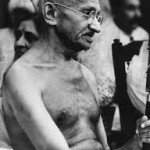 Wherever we surrender to love, peace will soon seek to surrender us to itself.
Wherever we surrender to love, peace will soon seek to surrender us to itself.
Conceptually, perhaps, the idea that peace can be apprehended instinctively, emotionally and psychologically as a threat can seem outrageous. Who doesn’t want peace? Why would we try to resist it? Why would we panic when peace is coming, and coming for “us”?
Yet the paradigm shift beyond mind that allows us to open the heart to allow the presence and flow of unconditional love through all the empty fibers and spaces around and within all we believed ourselves to be, will rapidly bring peace. And then we can discover ourselves diving head-first into the “Laundry”.
Where could the conflict with peace be? Here are just some of the areas into which we are liable to find ourselves suddenly entangled.
– How can we find peace when there is such cruelty in the world?
– How can we allow peace in the whole area of intimacy when we are so liable to violated?
– How can there be peace when we could be shamed, blamed and banished from the group?
– How can the allow peace when there is death and loss?
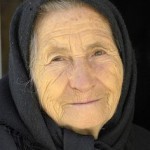 Reactions to peace can bypass thought processes altogether, moving directly to the 2nd brain in the stomach. Connected to our conscious brain through the vagus nerves, this center of physical and emotional reactivity can literally scream “NO” to peace, as if it is a death threat.
Reactions to peace can bypass thought processes altogether, moving directly to the 2nd brain in the stomach. Connected to our conscious brain through the vagus nerves, this center of physical and emotional reactivity can literally scream “NO” to peace, as if it is a death threat.
Peace can literally be experienced as undigestable. Peace would mean breaking the basic energetic contract of incarnation which is found in the natal identification of the baby with the atmospheres, contractions and subtle behaviors of the mother. It also allows the possibility of unity between male and female aspects (mother and father) which can be so deeply wounded in early energetic conditioning. Feelings can vary from a dread of deep betrayal, horror, jealousy or even an all-out terror of death.
These are the feelings of thwarted peace. When we meet such contractions inside ourselves, especially after boundless experience of love, it is extremely important to not try and pursue, possess and tie down the apparently lost love, but to take the frightened body, inside and out, and encourage it to allow the care, love and support of peace.
Peace is not a death threat, it is the source of love. It is the first vibration emerging out of the deepest non-identified, non-reflective source of all we are. Peace is not a restriction on the possibilities of living, it is the that which releases all the possibilities. It is not the end of life, but the source.
When we instruct the body to relax, inviting this peace into the contractions cell by cell, we can begin to reunite with the imperceivable, powerful, universal support that has always been a backdrop to all our relationships, no matter how damaged.
Unconditional peace is not surrender. The opposite of surrender if war. Beyond the twin dance of was and surrender, between every object and within every form, in the most intimate breath of our inner vulnerability, to the distant precincts of the physical universe, this peace is here for us, and we are here for it.
Indeed, there is no separation.
July 6, 2015
One step away from universal love. The healing power of nonduality.
Where are you now? Are you confined in a physical body? Are you limited by the range of your physical senses? Does the feeling of the weight of your body define you? Does the flickering of the mind give you shape? Are you found in the computer screen as your eyes pass over these words? Or in the feelings or reactions in your blood, nervous system and thoughts to these words? Where are you now?
Imagine that there is an infinite love in the space around, between, behind and before all objects, all feelings, all sensations. How would it be if the secret to all we are, and all we can ever be is not in the stuff, but in the space between all things? How would it be if the only obstacle between ourselves and this infinite love was our own beliefs in limitation?
Imagine that awareness, or consciousness is not confined within the perimeters of the body and the five physical senses. Imagine that even the secret to our ability to feel, touch, perceive or be aware is found in the space between objects, not in the objects we perceive.
We can try it out. Focus on an object nearby and put the full consciousness there. Perhaps use your hand.
Now shift your focus to the space around the hand, letting your attention move into all that area around the hand where the hand is NOT. Can you sense how your perception of the hand comes to life? Can you sense this appendage, this dear, cherished, sacred human hand of yours comes to life?
We depend on the space between stuff. We depend on it as much and even more than the oxygen we breath. We depend on the empty spaces within out own body and mind – far more than we depend on any one cell or any one organ. Without the empty spaces we would implode. Without the empty spaces, being here would not be possible.
The good news is that each particle that makes up the cells which make up our physical body is over 99 percent emptiness. So this secret – this infinity – is not missing. It is just we that exclude it through a dogmatic addiction and investment in the reality of objects, rather than the deeper truth of the omnipresent, pre-existent emptiness between and before and after every object.
We believe in objects as the source of “objective” reality because from the perspective of the physical brain, they seem to be stable. We can grasp at them. Who can grasp at empty space?
Yet no object is stable. All is in constant transformation – including our bodies, brains, earth, water, wind and anything we could ever create. All is born and all will die in an ongoing circulation against the backdrop of the only stability there can ever be – the backdrop of this infinite, eternal empty space.
Our body is a limitation in time and space. Our minds are limitations in time and space. Even our perception is limited in time and space. Yet time and space could not exist without timelessness and boundlessness. These two parameters of all form, cannot be, or inter-be, let alone transform or heal, without the pre-existent eternity and infinity in which they appear. And eternity and infinity can not birth time and space without that one, prior even to perception, before consciousness, which allows the splitting into these two dimensions.
That one is intimate, all pervasive, alive, powerful and everywhere in the emptiness. It is just so close to home, we fail to allow it. That one is at the source of all we are, the source of the here and now, the source of being, separately and as one. The source of endless love.
Who or what can be afraid of the emptiness? Why would we retract our consciousness or fear this space which is never born and never dies? Why would we shy from it, in our outer and inner perception?
Seen from the perspective of an object – such as a separate personality that believes it must fulfil its agenda, that believes in consequence or good and evil, that believes it can somehow claim immortality even though it doesn’t even know for what – emptiness is a threat. It is a threat because the emptiness exposes the “person” as nothing other than a form in transformation. It exposes that the “personality” that wants, grasps, and rejects in a perennial separation from the whole is in a state of delusion.
Emptiness is the death bell of the person – the bell that chimes through every moment of awakening. So the person is afraid. The person is an object. We watch our persons in their life-time careers. We watch them strive and survive. We watch them grown and die, again and again. But we are not the person. We are not the object, but the subject – the one that watches through the heart of the emptiness.
Yet this person, believing in itself too much, has no idea of the blessings that rain down out of its own demise. In the agony of survival in separate form, it fights, cries out, and screams in pain. It regresses back to seek justification in the wounds of childhood, it runs forward to seek status in the thwarted ambition to become “somebody”. It contracts itself in a dark freeze of rejection of it’s own holy loneliness, a loneliness created by this very investment in absolute separation. It becomes blind to others, deaf to itself, and cruel.
All around this person, the love is waiting. The supreme friendliness of the universe, and all we are which is free of being anybody, is waiting to receive this contraction called “somebody” home into its infinite and eternal core – not as a malformed individual, but as the supreme individual – an inextricable part of the source of it all.
Loving awareness is everywhere in the emptiness, familiar, intimate, timeless and patient. All we have to learn to do is to allow it. Allow the empty space between all phenomena as being the one causal presence of all we are, and all we ever could be.
All we need is to softly let our personal awareness fall back into that greater awareness of awareness. To let ourselves expand beyond the limitations of thought and feeling into this boundless, inner and outer awareness of being aware. Here, in this infinite space, our small, transient struggles are tenderly held and unjudged: here, our body, minds, thoughts, sufferings and fears can find liberation and peace.
We are held in a refinement of care which needs no mental control. Through the allowance of our own infinite awareness, the smaller forms of us can rest in the heart of the greatest healer of all – the life that runs through the emptiness, through every molecule of this transient, sentient, physical body, and through every moment of this awesome service to creation which is the agreement to be here, now, for real.
I AM HERE - Opening the Windows of Life & Beauty
- Georgi Y. Johnson's profile
- 30 followers




